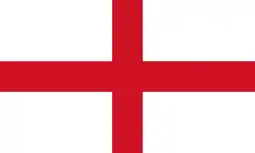Coupland Castle
Coupland Castle is situated in the village of Coupland, 4 miles (6 km) to the north-west of Wooler, Northumberland, England. It is a Grade I listed building. The Grade I listed "castle" is actually a tower house "built after 1584, with irregular later additions".[1]
| Coupland Castle | |
|---|---|
| Northumberland, England | |
 Coupland Castle, 2007 | |
 Coupland Castle Location in Northumberland | |
| Coordinates | 55.574°N 2.103°W |
| Grid reference | NT936312 |
History
Coupland Castle is a tower house rather than a castle, and was probably built at the end of the 16th century, sometime after 1584.[2] The tower has three storeys, with an attic on top and a small projecting tower carried up the south wall. Between the two towers, the entrance to the castle with the date 1594 inscribed on the door jamb.[3] The building is made of rubble from different stone types. In addition, the building has a slate roof.[2]
A date-stone over a fireplace in the tower engraved 'GW 1615 MW' is thought to represent George and Mary Wallis, owners at that date.[4]
Other historic features include the upper spiral staircase, designed to be defended by a left-handed swordsman, and a resident ghost who was said to haunt the Court Room, before reputedly being exorcised in 1925. A separate farmhouse was added to the south-west of the tower in the 18th century.
In 1713, the property was purchased from the Wallis family by Sir Chaloner Ogle a successful naval officer. During his command of HMS Swallow (1703) against the notorious pirate Bartholomew Roberts in the Battle of Cape Lopez in February 1722, Roberts was killed.[5]
The castle has been added to over the years and was restored in the 19th century. In 1820 it was extended when a three-bay two-storey house was built adjoining the tower.[4]
The Bates family owned the estate in the 18th century. Elizabeth Bates, heiress to the estate, married Matthew Culley (born 1731), the noted agriculturist, in 1783.[6] In 1820 the house was the residence of a later Matthew Culley, High Sheriff of Northumberland in that year. The Culleys sold the estate in 1928.[7] Coupland Castle was designated a Grade I listed building on 21 September 1951.[2] The listing states that significant alterations had been completed in the 16th, 17th, and 18th centuries and then, circa 1820-25.
Robin Jell bought the property in 1979 and lived there with his second wife Fiona.[8] Jell died in 2019 and in 2020, the castle was put up for sale.[9] Jell had restored the 13,747sq ft main house; the property included a three-bedroom cottage and a lodge, as well as a series of outbuildings.[10]
References
- "Coupland Castle". Historic England. Retrieved 4 September 2022.
- Historic England. "Coupland Castle (1042343)". National Heritage List for England. Retrieved 22 March 2020.
- Keys to the Past Archived 2012-05-10 at the Wayback Machine
- Structures of the North East Archived 2011-07-16 at the Wayback Machine
- "A sprawling castle once owned by the Naval commander who ended the piratical career of the real-life Jack Sparrow". Country Life. Retrieved 4 September 2022.
- Matthew and George Culley. Travel Journals and Letters, 1765-1798 Edited by Anne Orde 2002
- Churchill, Penny (25 January 2020). "A sprawling castle once owned by the Naval commander who ended the piratical career of the real-life Jack Sparrow". Country Life. Retrieved 22 March 2020.
- Lawford, Melissa (2 February 2020). "Swashbuckling owner sought for frontier fort - A fine Northumberland castle, once home to the naval captain who killed Black Bart, has been put up for sale by its latest daring resident". Daily Telegraph. London, England. p. 10.
- Johnson, Helen (1 February 2020). "Northumberland's Coupland Castle is on the market for over £1.9million - take a look inside". Northumberland Gazette. Retrieved 22 March 2020.
- A sprawling castle once owned by the Naval commander who ended the piratical career of the real-life Jack Sparrow
- Fry, Plantagenet Somerset, The David & Charles Book of Castles, David & Charles, 1980. ISBN 0-7153-7976-3
